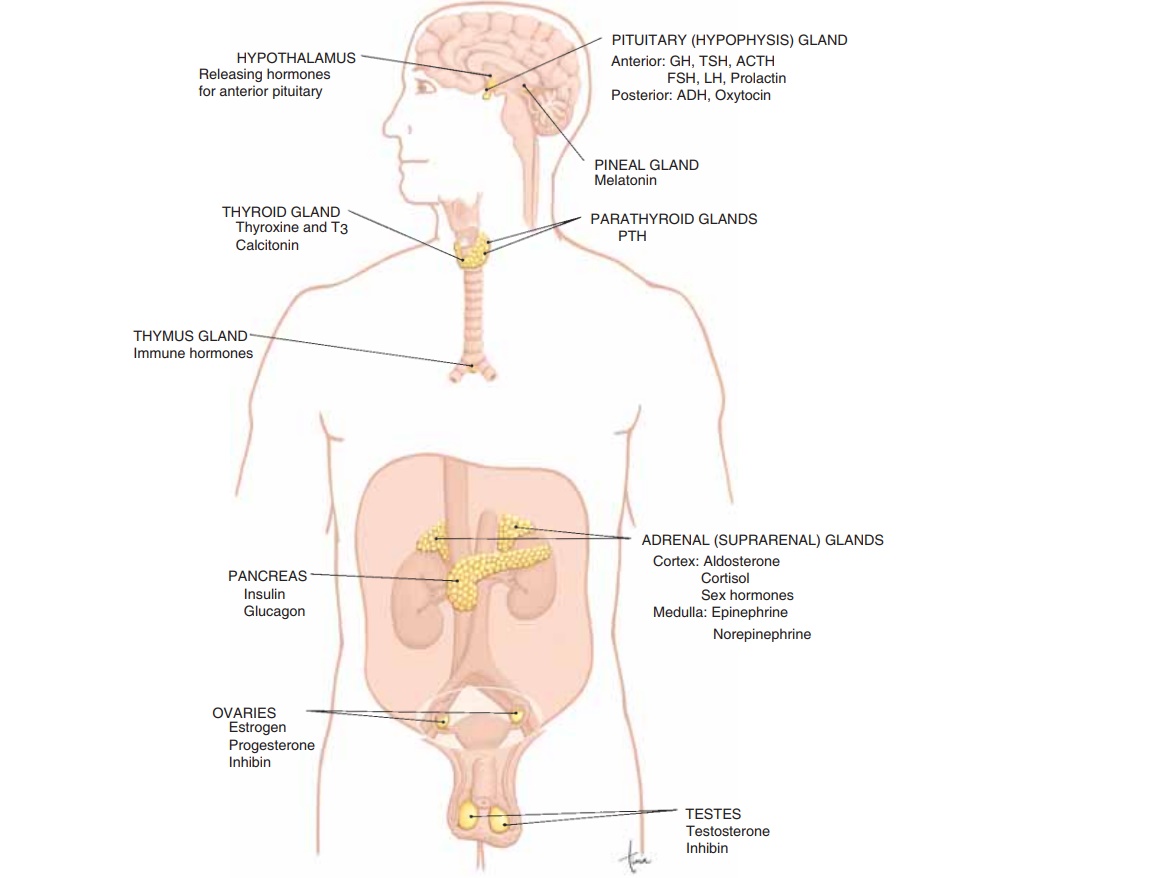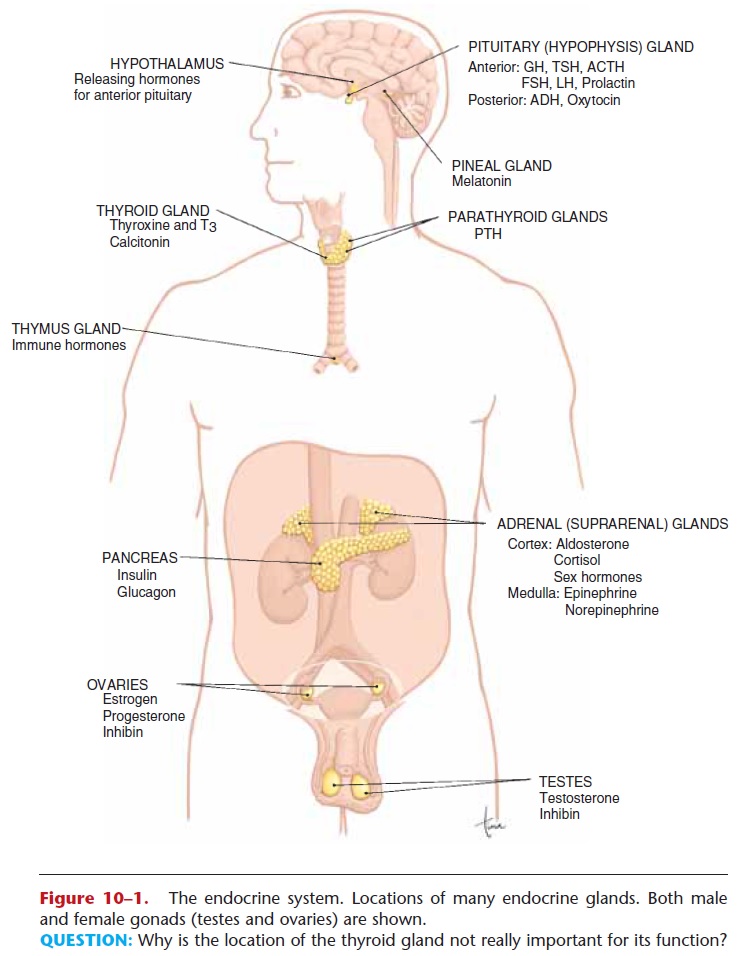Chapter: Essentials of Anatomy and Physiology: The Endocrine System
The Endocrine System

The Endocrine System
We have already seen how the nervous system regulates body functions by means of nerve impulses and integration of information by the spinal cord and brain. The other regulating system of the body is the endocrine system, which consists of endocrine glands that secrete chemicals called hormones. These glands, and the names of the hormones they secrete, are shown in Fig. 10–1.
Endocrine glands are ductless; that is, they do not have ducts to take their secretions to specific sites.

Figure 10–1. The endocrine system. Locations of many endocrine glands. Both male and female gonads (testes and ovaries) are shown.
QUESTION: Why is the location of the thyroid gland not really important for its function?
Instead, hormones are secreted directly into capillaries and circulate in the blood throughout the body. Each hormone then exerts very specific effects on certain organs, called target organs or target tissues. Some hormones, such as insulin and thyroxine, have many target organs. Other hormones, such as calcitonin and some pituitary gland hormones, have only one or a few target organs.
In general, the endocrine system and its hormones help regulate growth, the use of foods to produce energy, resistance to stress, the pH of body fluids and fluid balance, and reproduction.
Related Topics